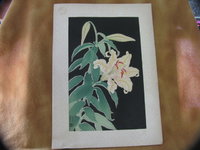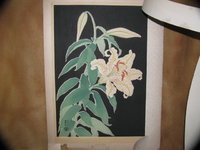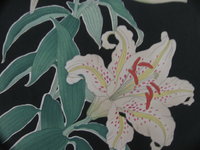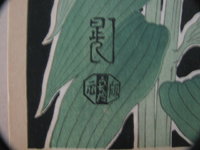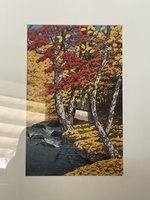penumbra
Imperial Masterpiece
From my old days of framing, I am offering this authentic beautiful Japanese Wood Block Print. Honestly, having forgotten so much of this, I do not remember the artists name, though I am sure I would recognize it upon hearing it. Because I am done framing, I have to be very selective with the prints I still have unframed, and it makes no sense to keep this print in the closet. The print is in its original presentation folder and though the folder has wear and tear, the actual print is in very good condition. The image size is about 10-1/2 x 15-1/2 inches. I am offering this print first here before I move it to another venue. Price with shipping within the USA is $80 by MO or PayPal.
